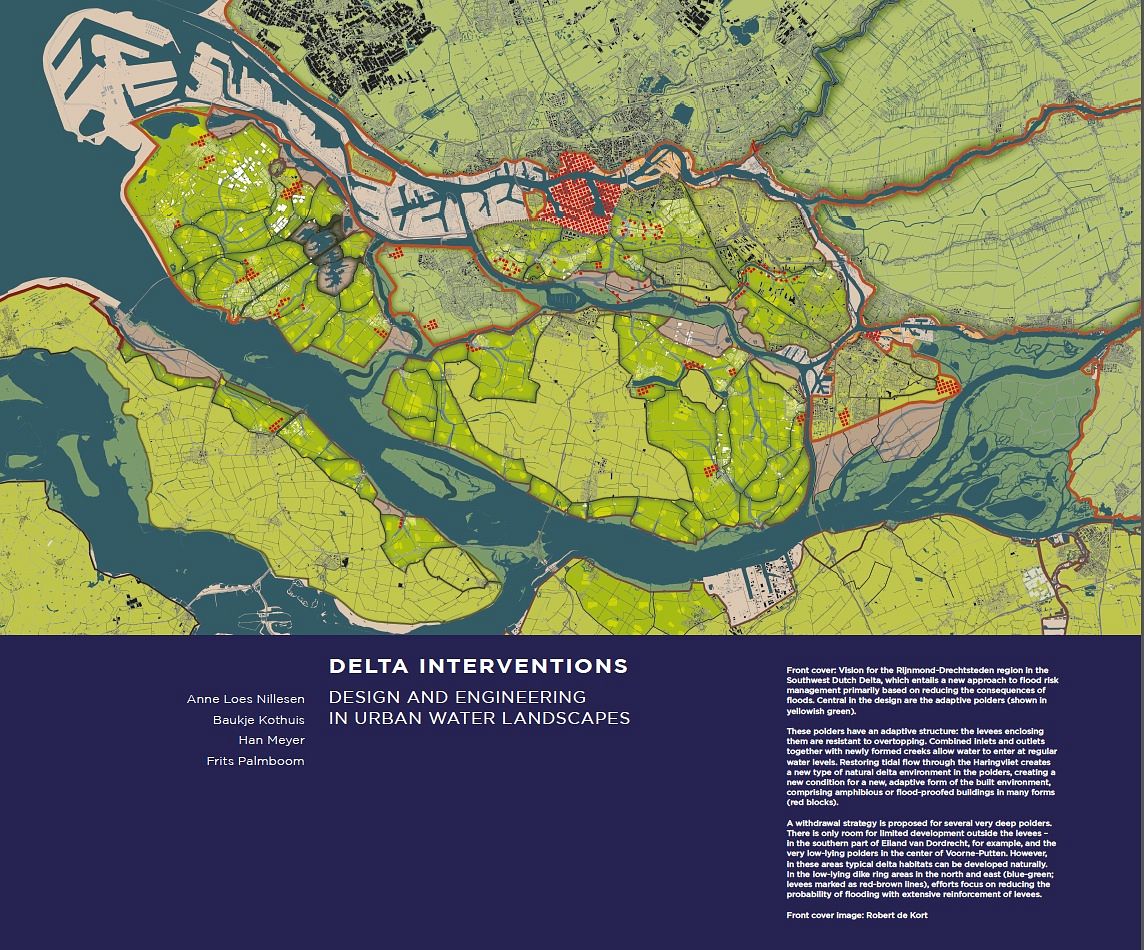All over the world, cities in river deltas are fast growing areas of economic activities. Increased urbanisation, in combination with rising water levels due to climate change, puts these areas at risk.
The book ‘Delta Interventions’ showcases solutions that were produced over the last seven years in the Delta Interventions Studio at the Faculty of Architecture & the Built Environment (BK).
About ten years ago, researchers started to realise that delta cities around the world were in for a triple whammy in the foreseeable future. Fast-paced urbanisation, often unplanned, changes the pattern of land-use. Green areas on the map rapidly turn to yellow, red or grey. Meanwhile, the sea level rises slowly but steadily and, thirdly, extreme weather events like heavy rainfalls are becoming more frequent due to climate change. Recently, the World Economic Forum has joined this analysis, stating in its 2015 Risk Report that water crises are the number one global risk. Scientists meanwhile have put up a top ten list of cities most vulnerable to flooding by 2050. Among those are Mumbai, Calcutta, Shenzen, Guangzhou and also New York, Miami and New Orleans.
Eight years earlier, in 2008, Delft researchers from the Faculties of Civil Engineering and Geosciences and BK joined forces in what was then called the Climate Adaptation Lab. Water had become an issue for spatial designers as well as for civil engineers. Students tried to find spatial solutions for water-related risks that would not only reduce risks but also contributed to a better quality of living environment.
The multidisciplinary approach did not always work out, as Climate Lab founder Anne Loes Nilissen wrote, “In the worst case, designers would, for example, propose and visualize a spatially attractive bypass for a river; however, when civil engineers investigated the proposal, they would inform the designer that water would not naturally flow there, and that the project would not reduce flood risk. The process would leave the designer frustrated because the engineer had ‘killed their baby’, and leave the engineer irritated that the designer did not take the basic laws of physics into consideration. Since then, a lot has improved, but it was in this context that the Climate Adaptation Lab was founded at the Delft University of Technology in 2008. In 2011 this became the Delta Interventions Studio.”
Starting with studies about Rotterdam and its environment, the Interventions Studio also explored the Southwest Delta and the Dutch Coast and the ’tamed’ sea of Lake IJsselmeer, all of which became chapters in the book. Other sections show the international studies about New York, Houston and various deltas in South America and Asia.
The book showcases a large variety in 72 master thesis studies with subjects like Urban Ecology in Houston (S.F. Brakel, 2015), The Design as a Process Instrument (S. van Baren, 2013) and Geothermal Spa in Sumatra (L. Moniaga, 2010). All the theses are kept in the TU Delft Repository.
The book Delta Interventions brims over with ideas. It features beautiful large photos, sometimes even over two pages. Appropriate for a book on designs, the text is kept to a minimum, leaving the most space for photo’s, maps, sketches and drawings. The book is a beautiful showcase of Dutch water designs as a possible export product. My only critique would be that the text is sometimes a bit too Dutch with expressions like ‘not for nothing’ (niet voor niets) or ‘return to the coast’ (terug naar de kust) which work well in Dutch, but less so in literal translations.
Anne Loes Nillesen, Baukje Kothuis, Han Meyer, Frits Palmboom, Delta Interventions, Design and Engineering in Urban Water Landscapes, Delft University Publishers 2016, 140 pages, Free download available via TU Delft respository.



Comments are closed.